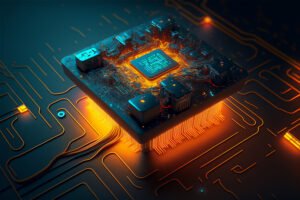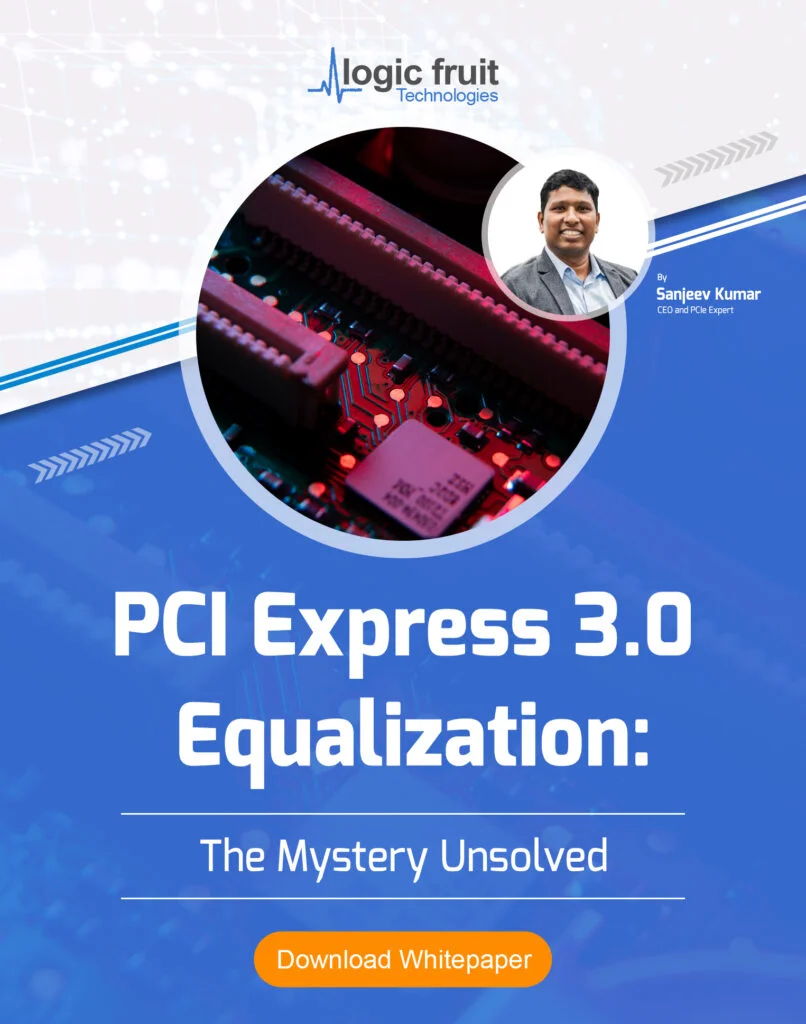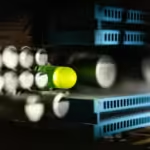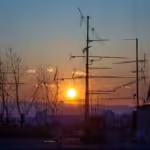Introduction
Seeking to capture events quickly and precisely has become more important in a time when advanced technology and photography have blended effortlessly. Both professional and amateur photographers require the capacity to record ephemeral moments in time, such as the beating of a hummingbird’s wings, in addition to producing photos of exceptional quality.
Field-Programmable Gate Arrays, or FPGAs, are one such invention that has completely changed the camera industry. This pursuit of speed and precision has led to other advances in camera technology.
FPGAs, which were first created for digital circuit research and prototyping, have unexpectedly found a home in the photography industry. These gadgets are incredibly adaptable and may be made to work amazingly well at certain activities. They are now a staple of modern cameras, enabling not only the fast and accurate real-time processing of photos but also the capture of amazing shots.
This talk explores how FPGAs and photography work together to improve the speed and quality of image processing and capture. We will learn how the way we capture moments and memories has changed as a result of FPGAs being essential tools for photographers and camera manufacturers.
Come along on this adventure to learn about the revolutionary effects of FPGAs in the field of photography and how they are changing the definition of what it means to take the ideal picture.
Role of FPGAs in Photography
In the field of contemporary photography, accuracy, quickness, and high-quality images are always sought after. The advent of Field-Programmable Gate Arrays (FPGAs) has signaled a paradigm shift in the acquisition and manipulation of pictures. FPGAs are essential for enhancing the functionality of digital cameras and image systems because they provide performance and flexibility that traditional processing units find difficult to match.
A. Traditional Imaging Process and Its Limitations
Understanding the standard imaging process and its inherent constraints is crucial before diving into the role of FPGAs. Light is captured by the image sensor in conventional digital cameras, which then transforms it into electrical impulses. After that, these signals are sent to a graphics processing unit (GPU) or central processing unit (CPU) for additional picture processing and compression. Although this method has been effective for many years, it has some significant disadvantages:
Processing Delays: Processing delays may be introduced by general-purpose computer devices such as CPUs and GPUs. The pace at which images are captured and processed in real-time may be impacted by these delays, making it more difficult to accurately record impromptu situations.
Power Consumption: Conventional processors tend to consume a lot of power, which increases battery drain and necessitates bigger camera designs.
Limited Flexibility: It is difficult to adjust CPUs and GPUs to a variety of imaging workloads and quickly change shooting settings because of their rigid architectures.
B. How FPGAs Enhance Photography
FPGAs, in contrast, are semiconductor devices that offer immense potential for enhancing precision and speed in photography:
Real-time Image Processing: Due to their superior parallel processing capabilities, FPGAs can handle several image processing jobs at once. For tasks like object recognition, color correction, and noise reduction, this feature is essential since it guarantees lag-free real-time results.
Low Latency: Since FPGAs have very low latency, they are perfect for applications where time is crucial. For instance, FPGAs can reduce shutter lag and produce accurate results when used in high-speed photography or to capture subjects that move quickly.
Power Efficiency: Due to their energy efficiency, FPGAs can be used in battery-powered devices such as cameras. Cameras have a longer operational life because of their capacity to process images with less power usage.
Customization: The programmability of FPGAs is one of its distinguishing characteristics. The FPGA’s configuration can be customized by photographers and camera manufacturers to meet unique imaging needs. This flexibility enables quick adaptations to novel image processing methods or fresh shooting circumstances.
High Throughput: Cameras can now take pictures at higher frame rates and with greater dynamic range because of FPGAs’ high throughput image processing capabilities.
FPGAs have a broad range of applications in the field of photography. They offer more advanced focus and exposure management, which can lead to more accurate and aesthetically pleasing photos. They can also improve image quality by lowering artifacts and boosting detail.
Image Processing with FPGAs
A vital component of contemporary photography, image processing is essential to raising the caliber and visual appeal of images. Conventional image processing tasks are computationally demanding and frequently need a large investment of time and resources. Examples of these tasks include object detection, color correction, noise reduction, high dynamic range (HDR) photography, and image stabilization. Field-programmable gate arrays, or FPGAs, have become a potent tool for accelerating these processes with advantages in speed and accuracy.
A. Accelerating Image Processing
Due to its great parallelizability, FPGAs enable the execution of several tasks at once. This parallelism is used in image processing to speed up several processes, including:
Noise Reduction: Noise is a common problem in photos taken in dim light or at high ISO settings. By using complex algorithms on individual pixels, FPGAs can eliminate real-time noise and produce images that are clearer and crisper.
Color Correction: To reproduce realistic and realistic colors in photos, precise color correction is essential. The overall quality of images can be enhanced by FPGAs’ quick analysis and color correction to match the desired output.
High Dynamic Range (HDR) Imaging: Several exposures are taken and combined in HDR imaging to produce a single image with a wide dynamic range. These exposures can be quickly combined using FPGAs to create beautiful, excellent HDR images free of observable artifacts.
Image Stabilization: Photos taken during picture capture may become blurry due to shaking and vibration. By adjusting for these movements, FPGAs can provide real-time image stabilization that produces crisp, blur-free photos.
Object Recognition: FPGAs can speed up object recognition algorithms for uses like automatic focusing or tracking objects in the frame, making it possible to identify and track subjects quickly and accurately.
B. Real-Time Processing
The real-time data processing capability of FPGAs is one of their most notable capabilities in image processing. FPGAs have real-time job execution capabilities, unlike traditional CPUs that would need post-processing after capturing an image. Applications where speed is crucial, like action photography, surveillance, or medical imaging, benefit greatly from this capacity.
C. Example Applications
To illustrate the impact of FPGAs in image processing, let’s consider a few real-world scenarios:
Medical Imaging: FPGAs are utilized in the medical profession to process and improve medical pictures in real-time, enabling more rapid and precise diagnosis. FPGA-based image processing is useful for tasks like real-time video analysis and X-ray or MRI image enhancement.
Astrophotography: FPGAs are utilized in the medical profession to process and improve medical pictures in real-time, enabling more rapid and precise diagnosis. FPGA-based image processing is useful for tasks like real-time video analysis and X-ray or MRI image enhancement.
Drone Photography: FPGAs are used by high-resolution drone cameras to process images fast, enabling photographers and videographers to take steady, crisp aerial shots.
Security Cameras: Advanced security features like motion detection and facial recognition are made possible by surveillance cameras using FPGAs for object recognition and tracking.
High-Speed Image Capture
In the quick-paced world of photography, it’s critical to quickly and precisely capture fleeting moments. High-speed image capturing is essential, whether you’re a wildlife enthusiast following a sprinting cheetah or a sports photographer freezing events on the field. This section explores the difficulties in capturing images quickly and the critical role Field-Programmable Gate Arrays (FPGAs) play in making it happen.
Challenges of Fast Image Capture
Fast-moving subjects present several challenges in photography, and these challenges are compounded when it comes to capturing high-quality images:
Shutter Lag: Shutter lag is the pause that occurs between pushing the shutter button and when the picture is taken with traditional cameras. This latency could let photographers overlook important shots in situations that move quickly.
Blur: Subjects moving quickly can produce motion blur, in which the subject or the camera moves as the exposure is taking place, giving the appearance of fuzzy or streaky photographs.
Low Light Conditions: It is more challenging to accurately capture fast-moving subjects when shooting in low light since longer exposure times are usually needed.
Focus and Tracking: Accurately tracking and maintaining focus on a moving target can be very difficult, especially when using conventional autofocus systems.
FPGAs and High-Speed Image Capture
FPGAs are well-suited to address these challenges and enable high-speed image capture in a variety of ways:
Burst Mode: Cameras using FPGAs are able to switch to burst mode, which enables them to take a rapid series of pictures one after the other. For photographers who need to capture moments in time, this tool is priceless.
Low Shutter Lag: When the shutter button is pressed, almost instantaneous image capture is achieved thanks to FPGAs’ substantial reduction of shutter lag. This guarantees that important occasions are not overlooked.
High Frame Rates: FPGAs have extremely fast frame rates for processing and storing images. For sports and action photographers who need a steady supply of high-resolution pictures, this feature is crucial.
Electronic Shutter Control: Electronic shutter control, made possible by FPGAs, enables quicker shutter speeds without requiring a mechanical shutter’s actual movement. This lessens motion blur while taking pictures of subjects that move quickly.
Buffering and Data Transfer: FPGAs ensure that images are processed, stored, and prepared for review or additional action promptly by offering effective buffering and data transfer capabilities.
Precision and Image Quality
Precision and high-quality images are crucial in photography. The goal of a photographer is to capture a moment’s essence as accurately, sharply, and faithfully as possible. These objectives are greatly aided by the application of Field-Programmable Gate Arrays (FPGAs) in photography, which allows photographers to produce beautiful and precise photos in a range of situations.
A. Reducing Artifacts:
FPGAs are essential for minimizing undesired artifacts in photos. Common artifacts that can lower an image’s overall quality include moiré patterns, noise, and chromatic aberrations. FPGAs can do real-time picture analysis and correction to reduce or eliminate these flaws because of their great processing capacity and flexibility. For example, FPGA-based noise reduction algorithms can improve the overall quality of the image by reducing random changes that could result in distortion or grain.
B. Enhancing Detail and Sharpness:
FPGAs enable photographers to produce photographs with more sharpness and more detail. FPGAs are capable of enhancing and interpolating image information through sophisticated image processing techniques including edge enhancement and super-resolution. As a result, images are captured with increased clarity, highlighting delicate details and subtle textures. As a result, images become more captivating and realistic, which makes them particularly useful for macro, landscape, and commercial photography.
C. Enabling Advanced Focus and Exposure Control:
One of the most important aspects of photography is learning how to focus and expose precisely. FPGAs can help in these areas by offering control and feedback in real-time. FPGA-enhanced autofocus systems can quickly and precisely modify focus points, guaranteeing that subjects are crisp and in focus. FPGA implementation can also help exposure control algorithms by enabling fine-tuning shutter speed, aperture, and ISO settings to achieve the ideal exposure for a particular picture.
For photographers, FPGAs essentially serve as the foundation for picture processing, guaranteeing that the resulting output is devoid of distortions and flaws. These programmable gadgets improve the accuracy and caliber of photos by reducing artifacts, boosting detail, and offering enhanced control. FPGAs are vital tools for photographers looking to produce beautiful, accurate, and visually compelling photographs that speak to consumers, whether they work in a product, portrait, or any other genre.
FPGA-Based Camera Systems
Camera manufacturers and technology inventors have resorted to FPGA-based camera systems in response to the growing demand for high-quality and fast photography. FPGA-based camera systems have several advantages, such as minimal latency, real-time image processing, and the capacity to manage intricate computational jobs. We will explore the realm of FPGA-based camera systems and consider how they have revolutionized contemporary photography in this section.
1. Integration of FPGAs in Camera Systems
Numerous camera systems, ranging from consumer point-and-shoot cameras to professional DSLRs and industrial-grade imaging equipment, have incorporated FPGAs. The hardware architecture of the camera includes these adaptable programmable elements, which allow for fast, real-time processing of picture data.
2. Parallel Processing and Acceleration
The capability of FPGA-based camera systems to carry out operations in parallel is one of the main reasons for their increasing popularity. Several logical units that can be configured to carry out distinct tasks simultaneously make up FPGAs. This capacity to process data in parallel is revolutionary for photography because it makes it possible to quickly complete image processing tasks—like object detection, noise reduction, and image enhancement—without sacrificing speed or quality.
3. Low Latency and Instant Feedback
Because of their reputation for low latency, FPGAs are perfect for applications where decisions must be made quickly. This implies that a camera with an FPGA installed can give the photographer immediate feedback in the context of photography. FPGA-based camera systems provide a smooth and responsive experience when altering exposure settings, catching fast-moving images, or applying real-time filters.
4. Customizability and Adaptability
Camera makers can design features and functionality of FPGA-based systems to meet their unique requirements. This versatility comes in quite handy for many types of photography. To process particular sorts of data, FPGA-based devices can be installed in industrial cameras used in machine vision. On the other hand, capabilities like face detection, real-time panorama stitching, and advanced filters can be found in consumer cameras.
5. Enhanced Image Quality
By enabling complex image processing techniques that would be impractical to run on conventional CPUs or GPUs, FPGAs greatly improve image quality. Photographers can improve their photographs by using FPGAs to produce superior HDR (High Dynamic Range) imaging, clearer images, more accurate color reproduction, and better noise reduction.
6. Advanced Connectivity and Data Transfer
High-speed interfaces for data transfer and networking, including USB 3.0, Gigabit Ethernet, or Thunderbolt, are frequently included in FPGA-based camera systems. This makes them perfect for professional and action photography by enabling the speedy transfer of high-resolution photos and movies to external devices for evaluation, sharing, or storage.
7. Real-world Applications
FPGA-based camera systems are becoming increasingly popular in several photography domains. For instance, they make real-time diagnosis and visualization possible in medical imaging. They help take steady airborne photos when using drone photography. They are employed in scientific research for high-speed imaging in disciplines such as microscopy and astronomy.
Challenges and Considerations
While using Field-Programmable Gate Arrays (FPGAs) in photography to improve speed and accuracy is certainly an exciting idea, there are several difficulties and factors to take into account. We’ll go over some of the major challenges and crucial elements that must be taken into consideration while using FPGAs in photography in this part.
Cost and Development Complexity:
Specialized hardware parts called FPGAs have the potential to dramatically raise camera system costs overall. They need bespoke programming and development, which can be a difficult and drawn-out procedure. Both consumers and camera makers may find it difficult to enter the market due to these prices.
Compatibility with Existing Technology:
FPGA integration with current camera systems can be difficult. It is necessary to fix incompatibilities between legacy hardware and software components. There are situations when this calls for a total rethink of camera architectures, which not all manufacturers may be able to provide.
Power Efficiency:
FPGAs can be very power-hungry even though they have amazing computational capacity. This may result in portable camera equipment producing more heat and having shorter battery life. It’s critical to strike the correct balance between power efficiency and performance.
Scalability:
Different photography applications can have quite different processing requirements. One major problem is making sure that FPGA-based solutions are flexible and scalable to different situations. Diverse camera types, such as DSLRs, smartphones, and specialized scientific cameras, could call for various FPGA implementations.
Software Integration:
Creating software for FPGAs can be a challenging endeavor. Proficiency with FPGA programming languages and tools is necessary. Furthermore, as FPGA-based software frequently calls for specific knowledge and resources, maintaining and updating it can be difficult.
Resource Constraints:
The clock speeds, memory, and logic cell counts of FPGAs are constrained. It can be challenging to strike a balance between these limitations and the needs of image processing activities. Developers must carefully optimize resource utilization and algorithms.
Market Adoption and Standardization:
It might not be common for the photography business to use FPGA technology, which makes it difficult for manufacturers to dedicate large resources to R&D. Industry cooperation and standardization initiatives may be able to help with this problem.
Long-Term Support:
FPGAs have a limited lifespan, and some models may be discontinued by manufacturers. Given that photographers frequently invest in equipment that should endure for years, it is imperative to ensure long-term maintenance for camera systems that rely on FPGAs.
Regulatory and Compliance Issues:
The use of FPGA technology in cameras may give rise to regulatory and compliance challenges, notably about privacy and data security, depending on the markets and countries.
It’s crucial to remember that FPGAs have significant benefits over other technologies in the photography industry in terms of performance, versatility, and adaptability. Many of these challenges can be solved as technology develops and the sector gets expertise with FPGA integration. To fully utilize FPGAs in photography and maintain their affordability for a wider variety of consumers, manufacturers and academics are still working to resolve these problems.
Future Trends and Developments
The application of Field-Programmable Gate Arrays (FPGAs) in photography is expected to undergo revolutionary shifts and exciting new advancements as technology progresses. FPGAs in photography have the potential to bring in a new era of even more creativity, speed, and precision. The following are important changes and trends to be aware of:
Advanced Computational Photography: It is anticipated that FPGAs will be essential to computational photography. FPGAs can handle complex algorithms for tasks like computational bokeh effects, picture fusion, and real-time depth perception by utilizing their parallel processing capabilities. As a result, the photos will be more visually striking and engaging.
AI Integration: In the field of photography, artificial intelligence (AI) and machine learning are becoming more and more significant. Because FPGAs can speed up AI workloads, smarter cameras will be possible. By improving functions like subject tracking, scene identification, and automatic image enhancements, they will make photography easier to use and more accessible.
Energy Efficiency: Concern over energy efficiency is rising across the board for technology. FPGAs will remain at the forefront of energy-efficient camera systems because of their low power consumption and high customizability. This trend will lessen photography’s negative environmental effects in addition to increasing battery life.
Real-time Image Analysis: Real-time image analysis made possible by FPGAs will pave the way for new uses in industries like security and medical imaging. For example, cameras with FPGAs can spot security threats in surveillance systems or anomalies in medical scans rapidly, improving diagnoses and safety.
Sensor Fusion: FPGAs will make it possible to use sensor fusion techniques, which combine data from several sensors in a camera, in the pursuit of higher image quality. Dynamic range, low-light performance, and overall image quality will all be enhanced as a result. Sensor fusion is especially important for cameras used in cars and drones.
3D Imaging: 3D imaging technology development will be greatly aided by FPGAs. They will enable real-time depth information capture for applications such as augmented reality, virtual reality, and 3D mapping. This will alter how we interact with moments as much as how we capture them.
Customization and Flexibility: The programmable feature of FPGAs will remain a benefit. Camera makers can modify the circuitry of the FPGA to provide specialized features and enhancements to fulfill particular photography requirements. This flexibility will encourage industrial innovation.
Reduced Development Cycles: Camera makers and software developers will be able to apply FPGA solutions more effectively as FPGA development tools become more widely available and user-friendly. Faster development cycles and a quicker incorporation of FPGA technology into new camera models will result from this.
Collaborations and Ecosystems: There will be more cooperation between FPGA producers, camera manufacturers, and software developers in the photography sector. Through these collaborations, ecosystems promoting interoperability and the smooth integration of FPGA-based solutions will be fostered.
Ethical Considerations: The ethical issues of privacy and picture modification will remain a matter of discussion as FPGA-equipped cameras get more capabilities. A crucial factor for the sector to take into account will be finding the correct balance between ethical technology use and technical breakthroughs.
Conclusion
In conclusion, a revolution in accuracy and speed has been brought about by the incorporation of Field-Programmable Gate Arrays (FPGAs) into photography. With the revolution in image processing brought about by FPGAs, photographers can now produce images with greater detail and quality. The art of creating images has been elevated by its capacity to minimize artifacts and improve control over all aspects of photography, including focus and color correction.
FPGAs have also ushered in a new era of high-speed image capture, enabling the unmatched clarity and precision of freezing fast-moving scenes. FPGAs give photographers the means to push the limits of what’s possible in the field, whether it’s sports photography or taking action photos. Photographers and other imaging specialists may now capture those ephemeral moments and present them with authenticity and creativity thanks to this technology.
The combination of FPGAs and photography has a lot of potential for the future. We’re about to witness even more revolutionary advancements with the combination of artificial intelligence and the continuous growth of computational photography. Even though there are still issues with compatibility and cost, FPGAs’ unwavering dedication to innovation guarantees that the field will continue to revolutionize photography and allow us to take pictures faster and more accurately.


![What is FPGA Introduction to FPGA Basics [2023] computer-chip-dark-background-with-word-intel-it](https://fpgainsights.com/wp-content/uploads/2023/06/computer-chip-dark-background-with-word-intel-it-300x171.jpg)









